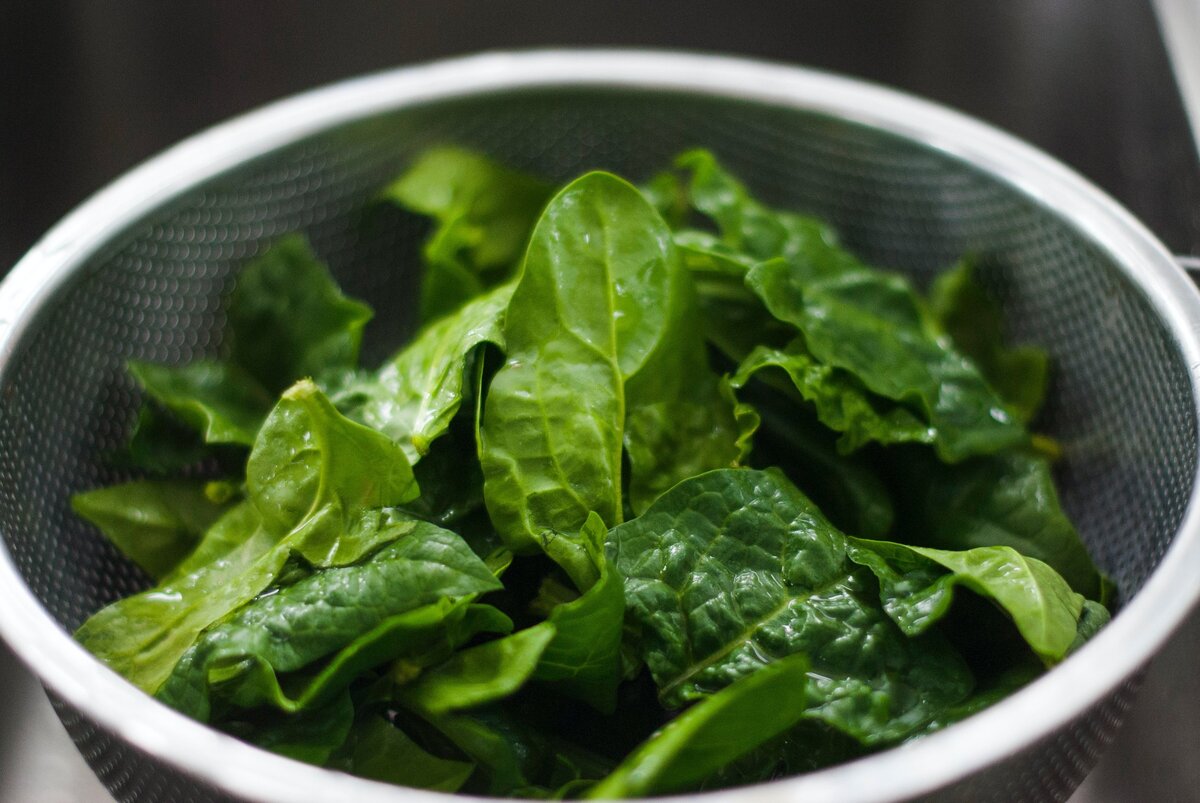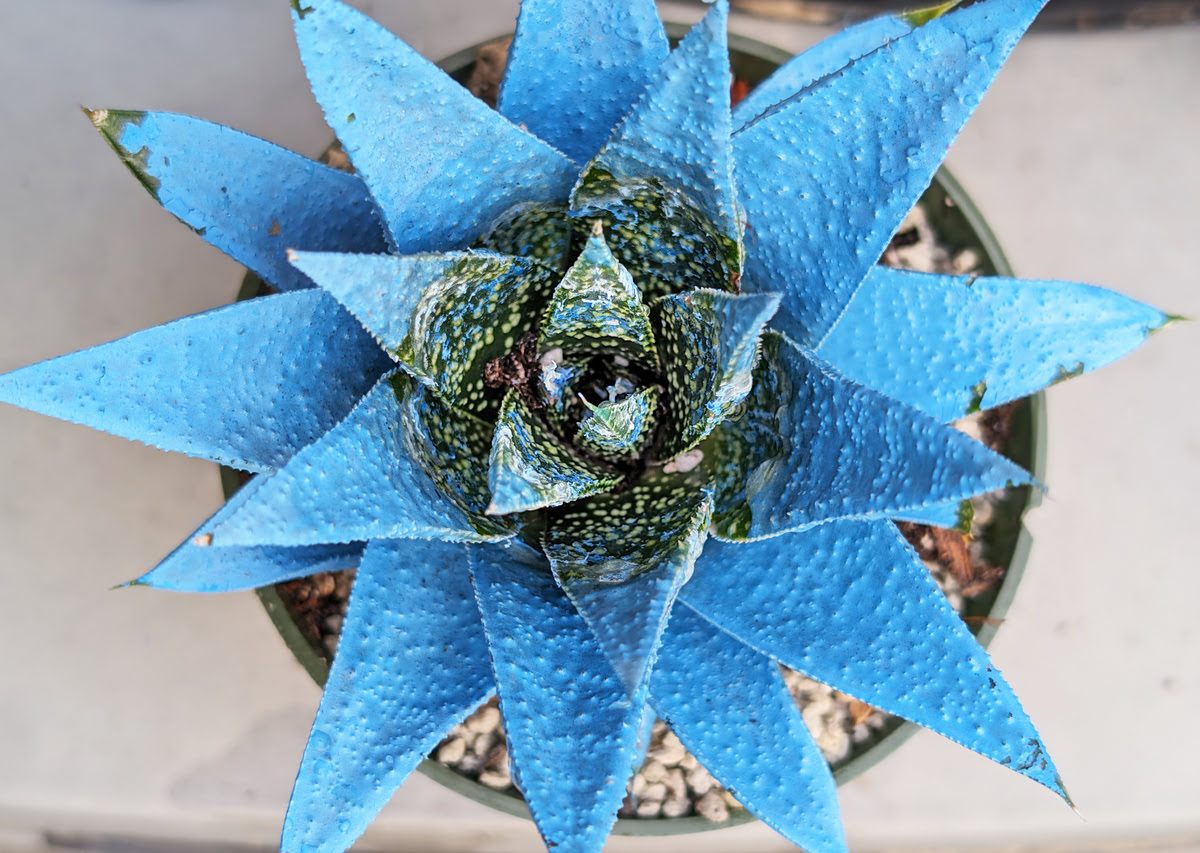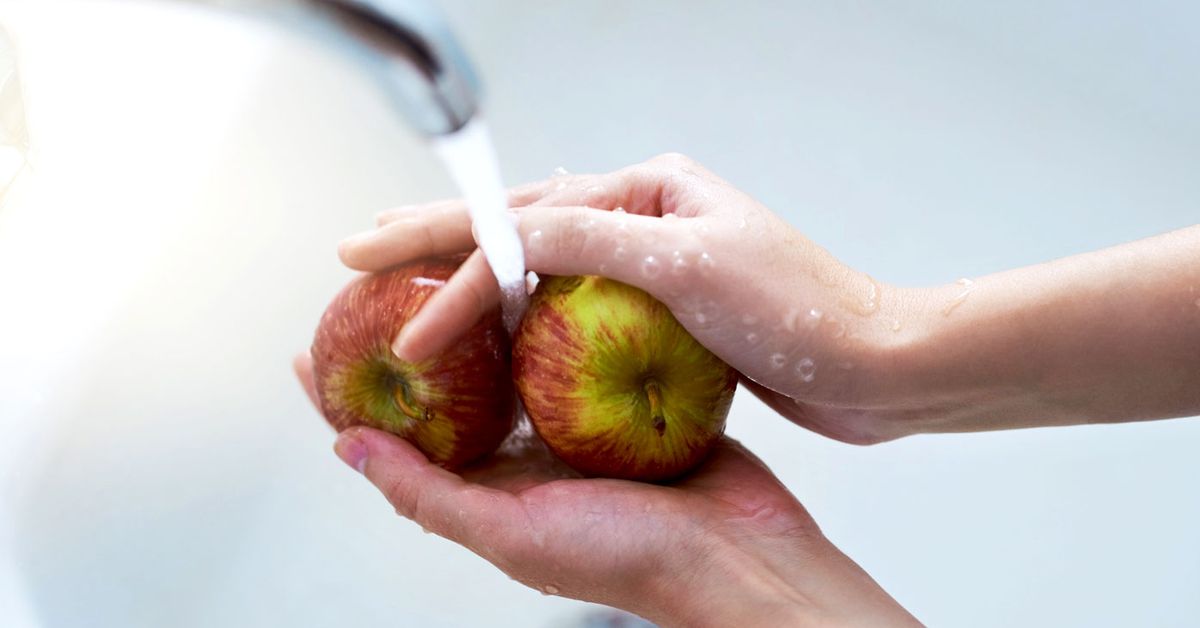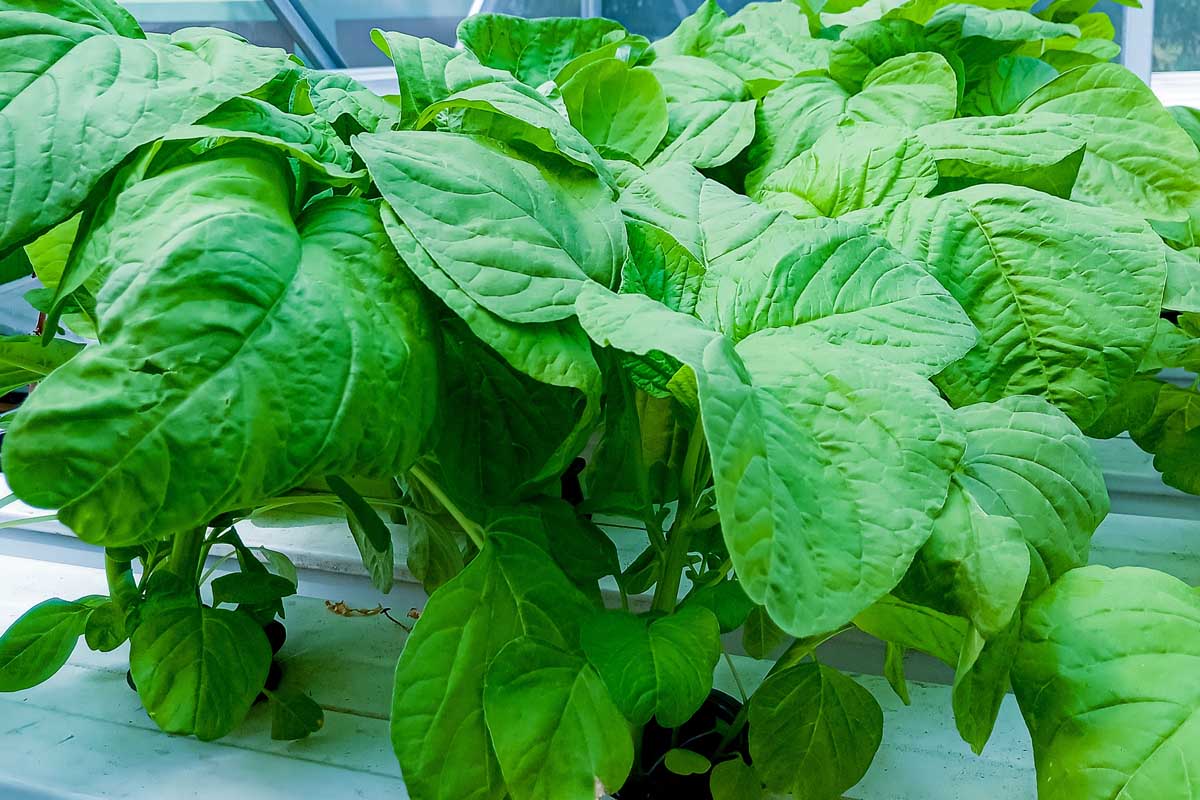Home>Gardening News and Trends>Latest News>How To Remove Pesticides From Spinach


Latest News
How To Remove Pesticides From Spinach
Modified: January 22, 2024
Discover the latest news and effective techniques on how to remove pesticides from spinach. Safeguard your health and enjoy cleaner, safer produce with our expert tips.
(Many of the links in this article redirect to a specific reviewed product. Your purchase of these products through affiliate links helps to generate commission for Chicagolandgardening.com, at no extra cost. Learn more)
Table of Contents
- Introduction
- Understanding Pesticides in Spinach
- Health Risks Associated with Pesticide Residues
- Ways to Remove Pesticides from Spinach
- Washing Spinach Properly
- Soaking Spinach in Vinegar Solution
- Using Baking Soda to Remove Pesticides
- Blanching Spinach
- Choosing Organic Spinach
- Peeling Outer Leaves
- Conclusion
Introduction
Welcome to the world of spinach, a nutritious and versatile leafy green vegetable loved by many. From salads to smoothies, spinach provides a host of nutritional benefits, including vitamins, minerals, and antioxidants. However, like many other fruits and vegetables, spinach may contain pesticide residues that can be harmful to our health.
In recent years, there has been growing concern about the presence of pesticides in our food, leading to an increased interest in finding ways to remove or reduce them. Pesticides are chemicals used to control pests and protect crops, but they can also have negative effects on human health when consumed in high amounts. While washing produce is a common practice, it may not be sufficient to completely eliminate pesticide residues.
This article aims to explore the various methods to remove pesticides from spinach effectively. We will discuss the health risks associated with pesticide residues, as well as provide practical tips and techniques to help minimize our exposure. So, whether you enjoy spinach in salads, stir-fries, or soups, read on to learn how to ensure your spinach is pesticide-free and safe for consumption.
Understanding Pesticides in Spinach
Pesticides are chemicals used in agriculture to protect crops from pests, such as insects, weeds, and diseases. They play a crucial role in ensuring high crop yields and reducing crop losses. However, the use of pesticides comes with potential risks, including their presence as residues on the produce we consume.
When it comes to spinach, a variety of pesticides may be used throughout its cultivation. This includes insecticides to combat pests like aphids and spider mites, herbicides to control weeds, and fungicides to prevent fungal diseases. These pesticides can leave behind residues on the spinach leaves, even after washing.
The level of pesticide residues in spinach can vary depending on several factors, including cultivation practices, application rates, and the specific pesticides used. Different countries have regulations and guidelines on acceptable pesticide residue levels in food, aiming to ensure consumer safety. However, it is important to note that even low levels of pesticides can accumulate over time and may have long-term health effects.
Several studies have linked prolonged exposure to pesticide residues with various health issues, including an increased risk of cancer, hormonal imbalances, developmental disorders, and reduced fertility. Children, pregnant women, and individuals with weakened immune systems may be especially vulnerable to the harmful effects of pesticides.
Given the potential risks associated with pesticide residues, it is important to understand the methods to minimize or eliminate them from our spinach. By adopting appropriate strategies, we can enjoy the health benefits of spinach while reducing our exposure to harmful pesticides. In the following sections, we will explore different techniques to remove pesticides from spinach effectively.
Health Risks Associated with Pesticide Residues
Pesticide residues found in spinach and other fruits and vegetables have been a cause for concern due to their potential health risks. While the presence of pesticide residues does not automatically mean immediate harm, long-term exposure or consumption of high levels of these chemicals can have adverse effects on our health.
One of the primary concerns is the potential link between pesticide residues and an increased risk of cancer. Some studies have found associations between certain pesticides and various types of cancers, including breast, prostate, and lung cancer. Pesticides that are classified as carcinogens or that disrupt hormonal functions are particularly worrisome.
Exposure to pesticide residues has also been linked to neurological and developmental disorders, especially in children. Certain pesticides, such as organophosphates and pyrethroids, have been associated with developmental delays, learning disabilities, and attention deficit hyperactivity disorder (ADHD). Additionally, prenatal exposure to these chemicals may impact fetal development and increase the risk of adverse birth outcomes.
Moreover, pesticide residues can interfere with the endocrine system, which regulates hormone production and balance in our bodies. These disruptions can lead to hormonal imbalances and potentially impact reproductive health, fertility, and growth and development in children.
Individuals with compromised immune systems are also at an increased risk when it comes to pesticide residues. Exposure to these chemicals can weaken the immune system and make individuals more susceptible to infections and diseases.
It is important to note that the effects of pesticide residues can vary depending on the specific chemical, the level and duration of exposure, and individual susceptibility. However, as consumers, it is crucial to be aware of these potential health risks and take steps to minimize our exposure to pesticide residues in spinach and other foods.
Ways to Remove Pesticides from Spinach
While it may not be possible to completely eliminate all pesticide residues from spinach, there are several methods you can employ to reduce your exposure. These techniques aim to remove or reduce the amount of pesticides present on the spinach leaves, making it safer for consumption. Let’s explore some effective ways to remove pesticides from spinach:
- Washing Spinach Properly: Start by rinsing the spinach leaves under cold running water. Use a vegetable brush to gently scrub the surfaces, ensuring that you remove any dirt, debris, or pesticide residues that may be present. Washing alone may not eliminate all pesticide residues, but it is an essential step to remove any loose or surface contaminants.
- Soaking Spinach in Vinegar Solution: Create a solution by mixing one part white vinegar with three parts water. Soak the spinach leaves in this solution for about 15 to 20 minutes. The acidic nature of vinegar helps to break down and remove pesticide residues. Rinse the leaves thoroughly with water after soaking.
- Using Baking Soda to Remove Pesticides: Create a solution using one teaspoon of baking soda and two cups of water. Soak the spinach leaves in this solution for about 15 minutes. Baking soda has been found to effectively remove pesticide residues due to its alkaline properties. Rinse the leaves thoroughly after soaking to remove any residue.
- Blanching Spinach: Blanching involves briefly boiling the spinach in water and then transferring it to ice-cold water. Bring a pot of water to a boil and add the spinach leaves. Boil for about 2 minutes, then remove the leaves and immediately immerse them in a bowl of ice water to stop the cooking process. Blanching can help to remove pesticide residues and also retain the vibrant green color of the spinach.
- Choosing Organic Spinach: Opting for organic spinach can significantly reduce your exposure to pesticide residues. Organic farming practices prohibit the use of synthetic pesticides, making organic produce a safer option. Look for the USDA Organic seal when purchasing spinach to ensure its organic certification.
- Peeling Outer Leaves: If you are concerned about pesticide residues, you can choose to peel off the outer leaves of the spinach. While this may result in some nutrient loss, it can help to eliminate any potential pesticide residues that might be present on the surface of the leaves.
By incorporating these techniques into your food preparation routine, you can minimize your exposure to pesticide residues in spinach. Remember to always wash your hands thoroughly before handling food, and buy spinach from reliable sources to ensure its safety and quality. While these methods can reduce pesticide residues, it is crucial to acknowledge that they may not completely eliminate them. Balancing a varied and nutritious diet is essential for overall health and well-being.
Washing Spinach Properly
One of the most important steps in removing pesticide residues from spinach is to wash it properly. Washing can help remove any loose dirt, debris, and surface contaminants, including some pesticide residues. Here’s how to wash spinach effectively:
- Start by rinsing the spinach leaves under cold running water. This helps to remove any visible dirt, dust, or particles.
- Use a vegetable brush or your fingers to gently scrub the surfaces of the spinach leaves. Pay extra attention to the crevices and ridges where pesticide residues may be trapped.
- If possible, separate the leaves from the stems before washing. This allows for better cleaning and ensures that the water reaches all parts of the leaves.
- Rinse the spinach thoroughly with cold water, ensuring that all the surfaces are properly cleaned.
- Pat the leaves dry or use a salad spinner to remove excess moisture. Damp leaves can contribute to the growth of bacteria and mold.
It’s important to note that washing spinach alone may not eliminate all pesticide residues. Some pesticides can penetrate the surface of the leaves or may be systemic, meaning they are absorbed by the plant and cannot be washed away. However, washing is still a crucial step in reducing pesticide residues and removing any visible contaminants.
By washing spinach properly, you can remove surface dirt, debris, and some pesticide residues, making it safer to consume. Remember to wash your hands thoroughly before and after handling produce to maintain good hygiene and minimize cross-contamination.
While washing is an effective method, it is worth noting that it may not be sufficient for all types of pesticides. For additional strategies to remove pesticide residues from spinach, continue reading the following sections.
Soaking Spinach in Vinegar Solution
Another effective method to remove pesticide residues from spinach is by soaking it in a vinegar solution. The acidic nature of vinegar helps to break down and remove pesticides, ensuring cleaner and safer spinach. Here’s how to soak spinach in a vinegar solution:
- Prepare a solution by mixing one part white vinegar with three parts water. For example, you can use one cup of vinegar for three cups of water, depending on the quantity of spinach you have.
- Place the spinach leaves in a bowl or basin and pour the vinegar solution over them. The leaves should be fully submerged.
- Allow the spinach to soak in the vinegar solution for about 15 to 20 minutes. This duration allows the vinegar to penetrate the leaves and break down the pesticide residues.
- After soaking, remove the spinach leaves from the vinegar solution and rinse them thoroughly under cold running water. This removes any residual vinegar and loosened pesticide residues.
- Pat the leaves dry or use a salad spinner to remove excess moisture. Damp leaves can contribute to the growth of bacteria and mold.
Remember to use white vinegar for soaking spinach, as it is more effective in breaking down pesticide residues compared to other types of vinegar. Additionally, make sure to rinse the spinach thoroughly after soaking to remove any remaining vinegar and pesticide residues.
Soaking spinach in a vinegar solution can help to reduce pesticide residues, making it safer for consumption. However, it is important to note that this method may not eliminate all types of pesticides. For a more comprehensive approach, continue reading the subsequent sections.
Using Baking Soda to Remove Pesticides
Baking soda, also known as sodium bicarbonate, is another effective method for removing pesticide residues from spinach. Its alkaline properties help to break down and remove pesticides, providing a safer and cleaner leafy green. Here’s how to use baking soda to remove pesticides from spinach:
- Create a solution by mixing one teaspoon of baking soda with two cups of water. This solution can be adjusted based on the amount of spinach you have.
- Place the spinach leaves in a bowl or basin and pour the baking soda solution over them. Ensure that the leaves are fully submerged in the solution.
- Allow the spinach to soak in the baking soda solution for about 15 minutes. This gives the baking soda enough time to break down the pesticide residues.
- After soaking, remove the spinach leaves from the solution and rinse them thoroughly under cold running water. This rinses off any residual baking soda and loosened pesticide residues.
- Pat the leaves dry or use a salad spinner to remove excess moisture. It’s important to ensure that the leaves are adequately dry to prevent bacterial growth.
Using baking soda is a natural and cost-effective method to help remove pesticide residues from spinach. However, it’s essential to note that baking soda may affect the taste and texture of the spinach slightly. If you have concerns about these aspects, you can rinse the leaves thoroughly after soaking in the baking soda solution.
While baking soda can be effective in reducing pesticide residues, it may not eliminate all types of pesticides. By combining the use of baking soda with other methods outlined in this article, you can enhance your efforts to minimize pesticide exposure in spinach.
Blanching Spinach
Blanching spinach is another effective method for removing pesticide residues while also helping to retain its vibrant green color. This technique involves briefly boiling the spinach leaves and then transferring them to ice-cold water to halt the cooking process. Here’s how to blanch spinach:
- Bring a pot of water to a boil. The pot should be large enough to accommodate the spinach leaves without overcrowding.
- Add the spinach leaves to the boiling water and let them cook for about 2 minutes. Blanching for this short period helps to deactivate enzymes and remove pesticide residues.
- After blanching, quickly transfer the spinach to a bowl filled with ice-cold water. This process, known as shocking, stops the cooking process and helps to preserve the vibrant green color of the spinach.
- Allow the spinach to sit in the ice-cold water for a couple of minutes. This further helps to cool the leaves and ensures that any residual heat from blanching is eliminated.
- Remove the spinach leaves from the water and drain them well. You can gently squeeze them to remove excess water if necessary.
Blanching not only reduces pesticide residues but can also improve the overall texture and appearance of the spinach. It is worth noting that blanching may cause some nutrient loss in the cooking water. However, the benefits of reducing pesticide residues outweigh this minimal nutrient loss.
By incorporating blanching into your spinach preparation routine, you can effectively remove pesticide residues while retaining the visual appeal of the vibrant green leaves.
While blanching is a useful technique, it is important to keep in mind that it may not eliminate all types of pesticides. For a more comprehensive approach, consider combining blanching with other methods discussed in this article.
Choosing Organic Spinach
When it comes to reducing pesticide exposure in spinach, one of the most straightforward approaches is to choose organic spinach. Organic farming practices prohibit the use of synthetic pesticides, making organic produce a safer and healthier option. Here are some key benefits of opting for organic spinach:
- Reduced Pesticide Residues: Organic farming methods rely on natural pest control techniques and approved organic pesticides. This significantly reduces the amount of pesticide residues found on organic spinach compared to conventionally grown spinach.
- Healthier Soil and Ecosystems: Organic farming practices prioritize the health of the soil and ecosystems in which the spinach is grown. This approach promotes biodiversity, natural pest control, and the overall balance of the ecosystem.
- Environmental Sustainability: By choosing organic spinach, you are supporting sustainable agricultural practices that minimize the use of synthetic chemicals, reduce pollution, and prioritize soil and water conservation.
- No GMOs: Organic spinach is produced without the use of genetically modified organisms (GMOs). This ensures that the spinach is free from genetic modifications often associated with potential health and environmental risks.
- Stringent Organic Standards: Organic spinach is regulated by strict organic standards and certifications. Look for the USDA Organic seal or other organic certification labels to ensure the spinach meets these standards.
When purchasing organic spinach, it is important to remember that organic certification ensures compliance with organic standards. However, it does not guarantee the complete absence of pesticide residues. It is still recommended to wash organic spinach thoroughly before consumption to remove any potential contaminants.
While organic spinach may be slightly more expensive compared to conventionally grown spinach, the health benefits and reduced pesticide exposure make it a worthwhile investment. By supporting organic farming practices, we contribute to a healthier environment and our own well-being. When possible, choose organic spinach as a safer and more sustainable option.
Peeling Outer Leaves
Another method to reduce pesticide residues in spinach is by peeling off the outer leaves. While this approach may result in some nutrient loss, it can help eliminate potential pesticide residues that may be present on the surface of the leaves. Here’s how to peel outer leaves from spinach:
- Inspect the spinach leaves carefully, looking for any visible signs of damage, discoloration, or pesticide residue.
- Select the outermost leaves or any leaves that appear to have the most exposed surfaces.
- Gently hold the stem and peel away the outer layer of each leaf. Continue peeling until you reach the more tender and lighter-colored inner leaves.
- Discard the peeled outer leaves or set them aside for use in composting or other recipes that don’t require raw spinach.
Peeling off the outer leaves can remove potential surface contaminants and reduce pesticide exposure. However, it’s important to note that peeling may not eliminate all pesticide residues since some chemicals can penetrate into the deeper layers of the leaf.
Keep in mind that peeling spinach may lead to a slight loss of nutrients, as many valuable nutrients are concentrated in the outer leaves. To compensate for this potential nutrient loss, it is advisable to include other nutrient-rich foods in your diet to ensure a well-rounded nutritional intake.
While peeling spinach is an additional step, it can provide an extra layer of assurance in minimizing pesticide exposure, particularly if you are unable to access organic spinach. Remember to always wash the remaining leaves thoroughly before consuming them, even after peeling.
By adopting this method, you can reduce potential pesticide residues on the surface of spinach leaves, making it safer for consumption.
Conclusion
Pesticide residues in spinach have raised concerns about potential health risks associated with consuming this nutrient-rich vegetable. While complete elimination of pesticide residues may not be possible, there are several effective methods to reduce exposure and minimize the risks.
Washing spinach properly is a crucial step in removing surface contaminants, although it may not eliminate all pesticide residues. Soaking spinach in a vinegar solution or using baking soda can help break down and reduce pesticide residues. Blanching spinach not only removes pesticides but also helps retain its vibrant green color.
Choosing organic spinach is another proactive approach in reducing exposure to pesticide residues. Organic farming practices prioritize natural pest control methods and avoid the use of synthetic pesticides.
Additionally, peeling off the outer leaves of the spinach can further minimize pesticide exposure, although it may lead to some nutrient loss.
It’s important to note that the combination of these methods offers a comprehensive approach to reduce pesticide residues in spinach. While no single method can guarantee complete elimination, adopting these practices collectively can significantly improve the safety of the spinach we consume.
Ultimately, by becoming informed consumers and taking proactive steps to minimize pesticide exposure, we can enjoy the nutritional benefits of spinach while reducing potential health risks. Remember to wash spinach thoroughly, choose organic options when possible, and implement additional methods such as soaking, blanching, and peeling to further reduce pesticide residues. By making these conscious choices, we support our well-being and contribute to a healthier and more sustainable food system.








